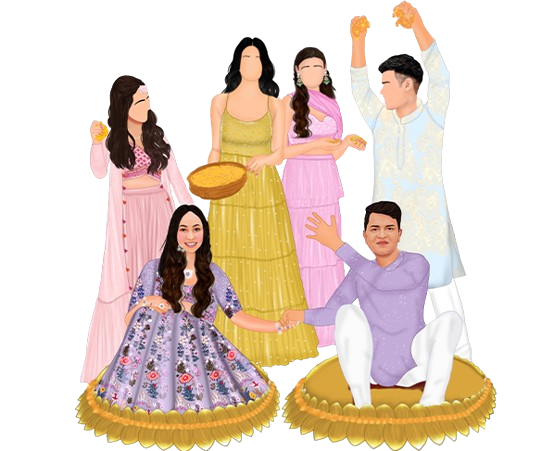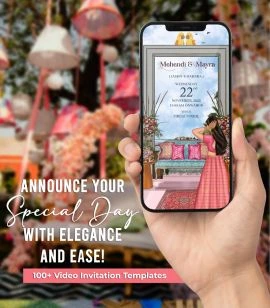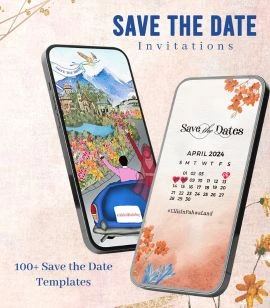Advertisement
By IS Team
Boost Your Brand With These Corporate Dinner And Cocktail Invitation Tips
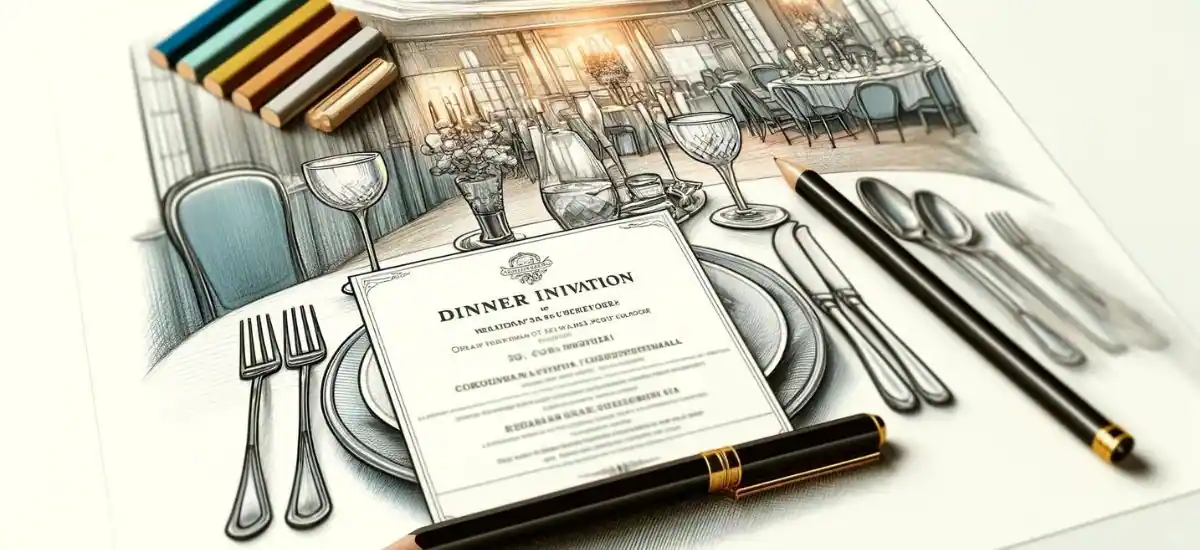
Advertisement
Corporate Dinner and Cocktail Invitations play a crucial role in setting the tone for sophisticated business gatherings. These invitations are not just about announcing an event; they embody the corporate ethos and ensure that every detail reflects the professionalism and spirit of the company.
From the elegance of formal dinners to the lively atmosphere of themed cocktail parties, each invitation is meticulously crafted to enhance guest anticipation and engagement. Ensuring every detail is clear, from the venue to the dress code, these invitations are the first step towards a successful corporate event, creating an inviting and memorable experience for all attendees.
By focusing on the fine points, companies can foster stronger relationships and showcase their attention to detail and commitment to quality.
Types of Corporate Dinner and Cocktail Events
Corporate events vary widely, each tailored to specific goals and atmospheres. Here's a quick guide to choosing the right event type for your needs:
Formal Dinners
Formal dinners are the pinnacle of elegance, perfect for significant milestones or hosting VIPs. These events focus on every detail, from gourmet menus to a strict black-tie dress code, creating a highly professional setting.
Casual Get-togethers
Casual get-togethers provide a relaxed environment ideal for team bonding and informal discussions. The laid-back atmosphere, often with buffet-style dining, encourages open communication and camaraderie.
Themed Cocktail Parties
Themed cocktail parties introduce a fun, creative element to networking. Whether it's a '20s speakeasy or a futuristic theme, these events break the ice engagingly and memorably.
Charity Fundraisers and Galas
Charity fundraisers and galas combine networking with philanthropy, often attracting high-profile guests. Centered around a charitable cause, these events enhance a company's brand image while fostering meaningful connections.
Each event type provides unique opportunities for achieving business goals, from team strengthening to enhancing community standing, making the choice of event crucial for intended outcomes.
Key Components of an Effective Invitation
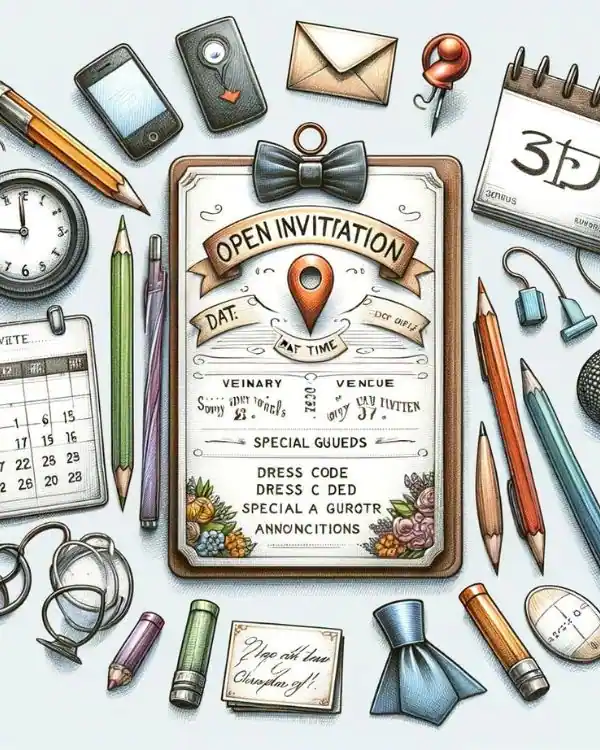
Advertisement
A successful corporate event starts with a well-crafted invitation. Here are the essential elements to include:
Date and Time
Clearly state the date and time of your event to avoid any scheduling confusion. Mentioning the end time helps guests plan their day.
Venue Details
Provide the full address and any pertinent directions or landmarks. For multi-location events, include details for each part of the event to guide guests smoothly.
Dress Code
Specify the dress code to set the event's tone and ensure guests feel prepared, whether it's black tie, business casual, or themed attire.
RSVP Instructions
Offer clear RSVP instructions with a deadline and contact information. An online RSVP option can simplify the process and improve planning accuracy.
Special Guest or Speaker Announcements
Mention any notable guests or speakers to spark interest and add prestige to your event, giving attendees insight into the event's unique offerings.
Including these elements makes your invitation both informative and engaging, helping to maximize attendance and set expectations.
Designing the Invitation
The design of your corporate event invitation is not just about aesthetics; it's a strategic tool that reflects your company's brand and sets the tone for the event. Here’s how to ensure your invitation resonates with both the essence of the event and your corporate identity:
Importance of Invitation Design in Reflecting Company Image
A well-designed invitation acts as a brand ambassador. It should mirror the professional image of your company and subtly communicate the event’s level of formality and atmosphere. This first impression can significantly influence a guest’s perception and their decision to attend.
Tips for Choosing the Right Visual Elements
- Color Scheme: Choose colors that align with your corporate identity for a cohesive look. If the event has a specific theme, adapt the colors accordingly while keeping brand consistency.
Example for Choosing a Color Scheme
- Scenario: Your company is hosting an annual gala to celebrate its 25th anniversary.
- Corporate Identity Colors: Suppose your company’s branding includes navy blue and silver.
- Event Theme: Since it's a silver jubilee celebration, incorporating silver is fitting, but you might also introduce a complementary color like deep burgundy to add a touch of luxury and celebration.
Implementation: Use navy blue as the primary background color for elegance and professionalism. Silver can be used for accents and borders to highlight the significance of the event and the milestone being celebrated. Deep burgundy can be used for call-to-action buttons or key details to draw attention and add depth.
- Fonts: Select fonts that are not only readable but also reflect the formality of the event. Use a more ornate font for formal gatherings or a simple, clean font for casual events. Ensure the font sizes differentiate clearly between headings and body text for better readability.
Example for Selecting Fonts
Scenario: You are planning a technology summit for industry professionals.
- Formality of the Event: The event is professional but geared towards innovative and forward-thinking attendees.
- Font Choice: Opt for a clean, modern sans-serif font like Helvetica or Futura for the body text, which conveys clarity and modernity. For headings or important announcements, consider a bolder version of the same font family or something slightly more stylized like Gotham to make key information stand out without compromising readability.
Implementation: Use the sans-serif font for general event details to keep the text readable, especially for digital viewing. Use larger sizes for headings and perhaps a contrasting color that matches the theme, ensuring important information catches the eye immediately.
Incorporation of Company Logo and Branding
Your company logo should be prominently displayed but not overpowering. Place it strategically to foster brand recognition without detracting from the key information. Use other branding elements, such as taglines or corporate colors, to enhance the design while maintaining a professional and elegant look.
By focusing on these design elements, you create an invitation that not only looks appealing but also reinforces your company's brand identity, ensuring it resonates with the invitees and enhances their anticipation for the event.
Content of the Invitation

Crafting the content of your corporate event invitation involves more than just providing the necessary details—it's about presenting them in a way that is both engaging and clear. Here’s how to write invitation text that effectively communicates your message:
How to Write Clear and Concise Invitation Text
Writing clearly and concisely is key to effective communication in your invitations. Start by stating the purpose of the event right away to grab attention. For example, "Join us for our Annual Gala to celebrate a year of success." Use bullet points or short paragraphs to break down the information, making it easily digestible. Avoid jargon or overly complex language unless it is appropriate for your audience.
Example:
- Event: Annual Client Appreciation Dinner
- Date: Friday, October 29th
- Time: 6:00 PM - 9:00 PM
- Location: The Grand Ballroom, City Hotel
Advertisement
Importance of Including All Necessary Details
Ensure every invitation includes key information that addresses the basic questions of who, what, when, where, and why:
- Who is hosting the event (company or department name).
- What is the occasion or purpose of the event?
- When the event will take place (date and time).
- Where it will be held (complete venue details).
- Why this event is significant (brief mention of what guests can expect or what will be celebrated).
Adding contact information for RSVPs or inquiries and any special instructions (e.g., parking details, dress code, whether guests can bring a plus one) is also crucial.
Tone and Language Appropriate for the Audience and Event Type
The tone and language of your invitation should align with both your audience and the type of event. For a formal event, use a more formal and polished tone, and consider traditional phrases like "You are cordially invited." For a casual event, a lighter, friendlier tone works well, and you might use a phrase like "Join us for a fun evening of..."
Example of Formal Tone:
"You are cordially invited to attend the President’s Dinner Gala, celebrating our esteemed clients and partners."
Example of Casual Tone:
"Come hang out at our end-of-year party! Let’s celebrate our achievements with good food and great company!"
By combining clarity, comprehensiveness, and the appropriate tone, your invitation will not only inform but also entice your guests, setting the stage for a successful corporate event.
Additional Information to Include

When crafting an invitation for a corporate event, it’s crucial to include additional logistical details that ensure guests can plan their attendance without any confusion. Here's what to consider adding to your invitations:
A. Directions and Parking Information
Providing clear directions and parking information is essential, especially for venues that might be challenging to locate or have limited parking options.
- Map Inclusion or Link to Online Map
- Include a small, printed map in the invitation or, for digital invites, a link to the venue’s location on a map service like Google Maps. This helps guests visualize the event location and plan their route.
- Parking Availability and Costs
- Inform guests about parking options near the venue. Mention if parking is free, the cost if paid, or if valet services are available. For crowded urban settings, suggesting nearby parking garages can be very helpful.
- Inform guests about parking options near the venue. Mention if parking is free, the cost if paid, or if valet services are available. For crowded urban settings, suggesting nearby parking garages can be very helpful.
B. Accommodation Details (if applicable)
For events that might attract out-of-town guests, providing accommodation details can significantly enhance the guest experience.
- Hotel Partnerships or Recommendations
- Offer information about hotels near the venue. If your company has partnerships with local hotels, mention these relationships and any benefits they might offer to your guests, such as reduced rates or complimentary services.
- Special Rates or Booking Codes
- Provide booking codes for hotels where you’ve secured a block of rooms at a discount. Ensure this information is highlighted so that guests can easily use it when making reservations.
- Provide booking codes for hotels where you’ve secured a block of rooms at a discount. Ensure this information is highlighted so that guests can easily use it when making reservations.
C. Special Requests
Accommodating special requests is a key part of ensuring all guests can enjoy your event comfortably.
Dietary Restrictions
- Encourage guests to inform you of any dietary restrictions by including a line on the RSVP card or a form link in digital invitations. This ensures everyone has suitable food options available.
- Encourage guests to inform you of any dietary restrictions by including a line on the RSVP card or a form link in digital invitations. This ensures everyone has suitable food options available.
Accessibility Accommodations
- Mention any accessibility accommodations at the venue, such as wheelchair access, sign language interpreters, or reserved seating near the stage for those with special needs. Invite guests to contact the event organizer if they have specific requirements.
- Mention any accessibility accommodations at the venue, such as wheelchair access, sign language interpreters, or reserved seating near the stage for those with special needs. Invite guests to contact the event organizer if they have specific requirements.
Including these details in your corporate event invitations not only shows foresight and consideration but also helps build a positive and inclusive atmosphere for all attendees, ensuring a smoother and more enjoyable event experience.
Review and Finalization Checklist

Advertisement
Ensure your corporate event invitations are perfect before sending them out by following this concise checklist:
A. Proofreading for Clarity and Accuracy
- Check all text for spelling and grammatical errors.
- Verify all details (date, time, venue, RSVP information) for accuracy.
- Ensure the invitation is clear and easy to understand.
B. Legal and Ethical Considerations
- Review and adhere to privacy policies concerning guest information.
- Ensure compliance with corporate and industry regulations related to events.
C. Test Distribution
- Send the invitation to a small group of colleagues for initial feedback.
- Make adjustments based on the feedback to refine the design, content, and clarity.
Completing this checklist will help guarantee that your invitations not only look professional but also meet all necessary standards and effectively communicate the event details.
Frequently Asked Questions
1. How far in advance should I send out corporate dinner and cocktail invitations?
Send invitations at least 4-6 weeks in advance for formal events, and 2-3 weeks for more casual gatherings. This gives guests adequate time to arrange their schedules and respond.
2. Should I include a menu in the invitation for a corporate dinner?
Including a brief overview of the menu can be helpful, especially if you are offering choices or need to note dietary options. This can aid guests in making informed decisions about their attendance.
3. Is it appropriate to use electronic invitations for corporate events?
Electronic invitations are perfectly acceptable, especially for less formal or internal company events. They offer convenience and ease of tracking RSVPs but ensure they align with the event's tone.
4. What should I do if I need to change event details after invitations have been sent? Promptly inform all invited guests of any changes via the same channel used for the original invitation. Include an apology for any inconvenience and clearly outline the new details.
Advertisement
I'm Looking For!
